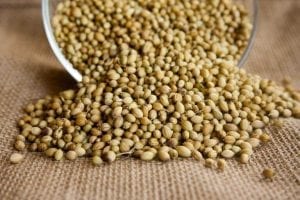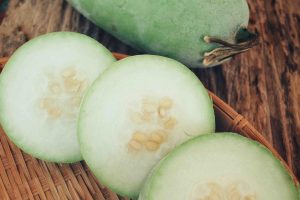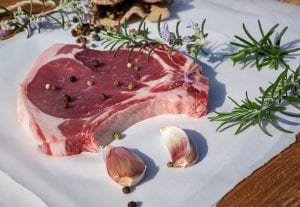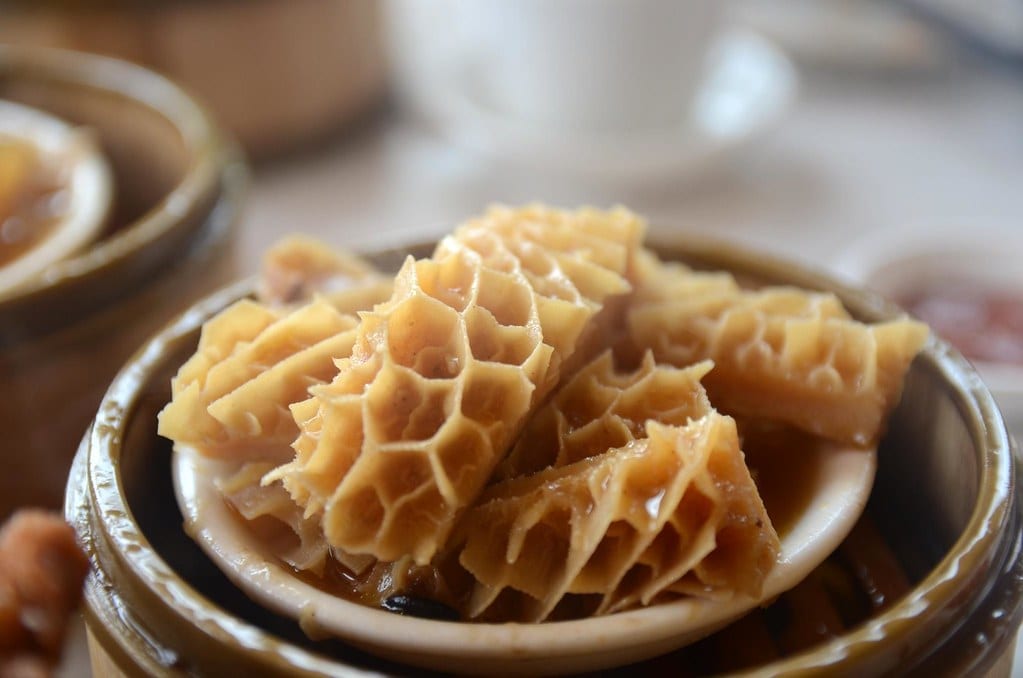
If you’ve ever come across this unusual-looking meat called tripe in your local grocery store, you might have wondered what tripe is made from. The moment you find out it’s from an animal organ, you might have felt a squirming sensation in your stomach. But did you know that it’s actually used in all kinds of dishes around the world? Italians, for instance, have been using it for dishes like trippa alla Romana for hundreds of years.
Organ meats (offals) used to have little to no value, with butchers discarding them after slaughter. Little did we know that they are actually highly nutritious, as they are packed with iron and protein. So before you think about ignoring tripe, let’s find out more about it and the different dishes that it can transform into. Who knows? Maybe it’s the next big thing to add to your diet!
What Is Tripe?
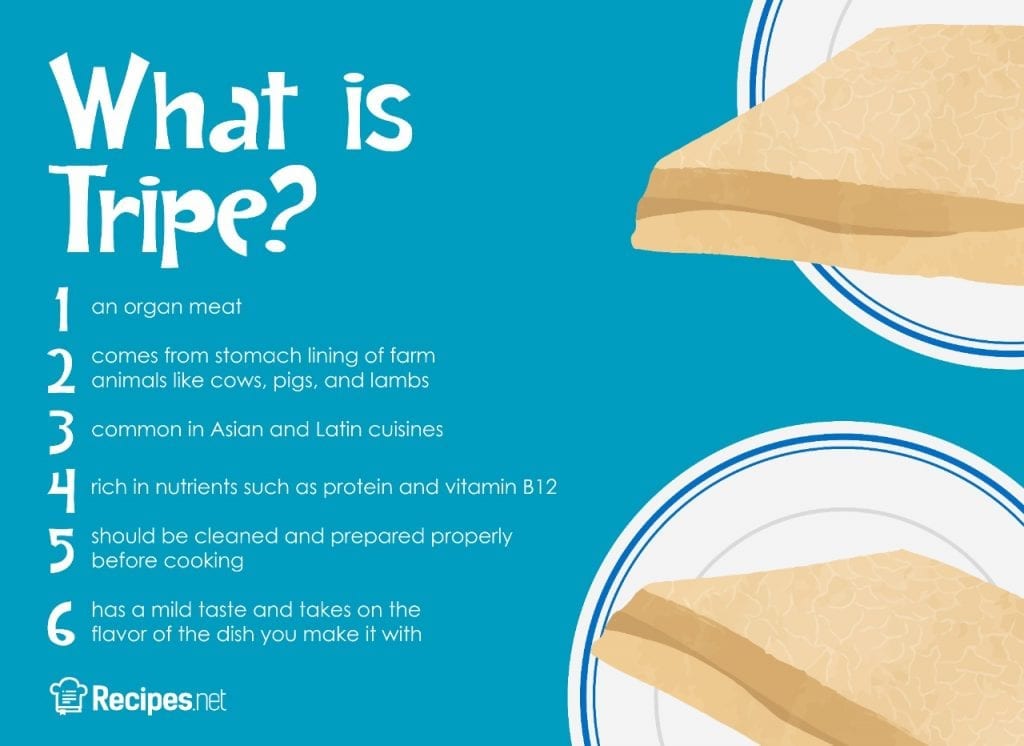
Tripe is the edible stomach lining of ruminant animals like cows, goats, and sheep, as well as pigs. This kind of animal meat is incredibly chewy and good to use for a variety of saucy dishes.
Different Types of Tripe Meat
Here are the four most common kinds of tripe:
- Beef Tripe – This is the edible lining of a cow’s stomach, and it’s the most popular kind of tripe in the market. Since a cattle is a ruminant animal, its stomach has a total of four chambers. It follows that there are four types of beef tripe as well, namely: blanket, honeycomb, reed, and bible tripe. These all differ in terms of appearance and texture.
- Pork Tripe – This pertains to the lining of the pig’s stomach. Unlike a cattle, a pig only has a single-chambered stomach. Hence, this looks quite uniform throughout. It’s sold as either unscalded (light to medium brown color) or scalded (cream to light brown color).
- Goat Tripe – This kind comes from the stomach of a goat. Since it also comes from a ruminant animal, this type can also be divided into four types like that of beef.
- Sheep Tripe – Also known as mutton or lamb tripe, this refers to the lining of a sheep’s stomach. This specific type has four types as well, as the stomach of the said animal also has four compartments, much like that of a cattle or a goat.
Ruminants have a unique digestive system compared to other animals, because they have a complex stomach with four compartments. This enables them to have better use of energy from breaking down fibrous plant materials.
As a result, the stomach of ruminants turns into a very rich source of vitamins and minerals. For one, it carries folate and vitamin B which helps with anemia. So, is tripe healthy? Absolutely! It’s even used in modern diets like Paleo, all because of its high protein content. However, if you have cholesterol problems, consult with your doctor first because entrails like this tend to be high in cholesterol.
READ ALSO: 35 Healthy Recipes For A Low Cholesterol Diet
What Does Tripe Taste Like?
Tripe has a very mild flavor. Most of the time, it just absorbs the taste of the sauce or broth that it’s cooked in. Properly tenderized, it can also have a satisfyingly soft, spongy, and chewy texture. It will work wonders in dishes like pepper pot soup!
How to Prepare and Cook Tripe
Because tripe is the stomach lining of an animal, it’s no surprise it has a rather infamous odor. Fortunately, properly cleaning it (involving bleaching) can help get rid of said odor. However, the bleaching process itself can give the meat a rather unpleasant smell. Here’s how to eliminate it:
To clean this entrail, you want to double-rinse it to make sure that it’s extra clean. Remove the extra fat and membrane first. Scrub the whole surface with salt and vinegar, then scrape it with a knife. Finally, rinse it with water. You can proceed to cook it from here, but you can also partially boil it for 10 minutes under high heat beforehand.
READ ALSO: Sweetbreads: What Are They and How to Cook Them
Best Tripe Recipes
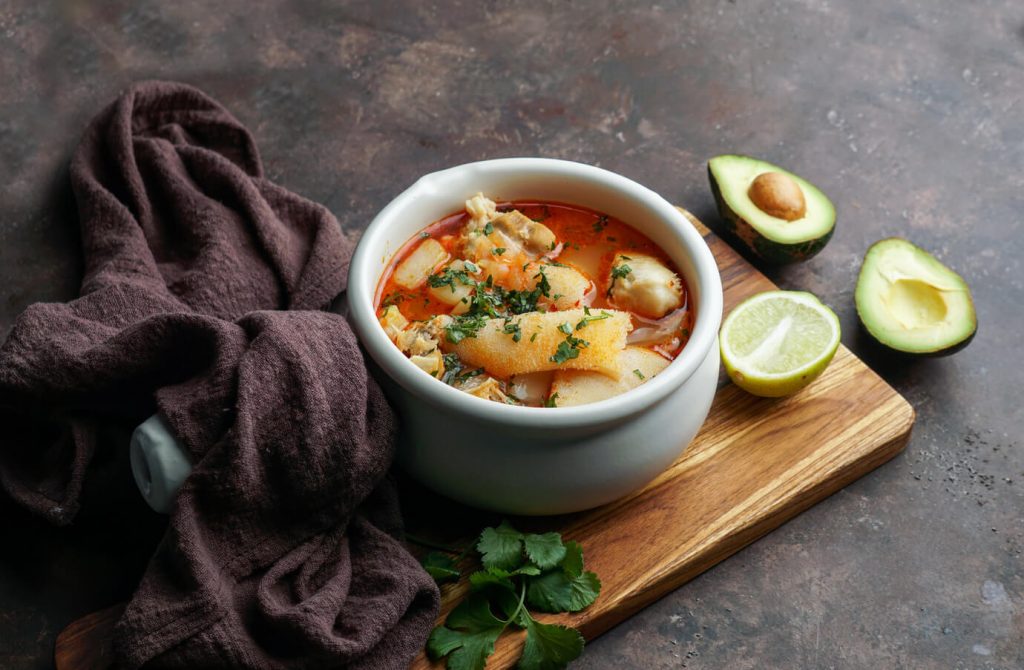
Tripe is a familiar ingredient in many cooking traditions around the world. You can use it to make a myriad of dishes. Here are the best recipes that are definitely worth a try:
- Beef Tripe Pho – Skip your usual pho takeouts with this easy recipe that you can make at home. Slices of the honeycomb variety should add a satisfying spongy texture to the whole dish.
- Mexican Menudo – The special ingredient is boiled until tender in special guajillo sauce to make this Mexican dish, packing it with a satisfying spicy flavor.
- Dominican Mondongo – Small bites of offal lend softness to this hearty comfort food. It also gets to absorb all the flavors of this Dominican stew’s thick broth.
- Kare Kare – The mild-tasting meat swims in a rich-tasting peanut sauce to make this traditional beef tripe recipe from the Philippines.
Where to Buy Tripe and Things to Look Out For
Selling and consuming tripe is common in Latin American, European, African, and Asian cultures. It’s available at most local markets in the said places. In the United States, however, they rarely sell it in local supermarkets. Instead, you can mostly find it at local slaughterhouses and butchers.
What they usually refer to as “fresh tripe” is one that has been bleached and cleaned for human consumption. Bleaching is an important step to deep clean this offal, although unbleached varieties are also available. Bleached ones are usually paler in color, from yellowish to completely white. They can also be scalded, and sometimes even already cooked. Regardless, one should still always clean and wash the it before cooking.
Meanwhile, green tripe is essentially the stomach lining in its rawest form. Contrary to its name, this type is mostly brown in color, with only hints of green here and there. This is often a result of the ruminant animal feeding on plants, grass, and leaves before slaughter. This type of tripe is not cleaned or bleached in any way, because it’s only meant to be consumed by dogs and other animals. That said, this kind is not safe to be eaten by humans.
- Look out for green tripe as it is not safe for human consumption.
Why You Should Consider Eating Tripe
There are plenty of reasons to include tripe in your diet. Not only does buying offal help lessen food waste, but it’s tasty and nutritious as well! Just make sure to clean it beforehand, and you’re well on your way to enjoying the best recipes that the world has to offer.

